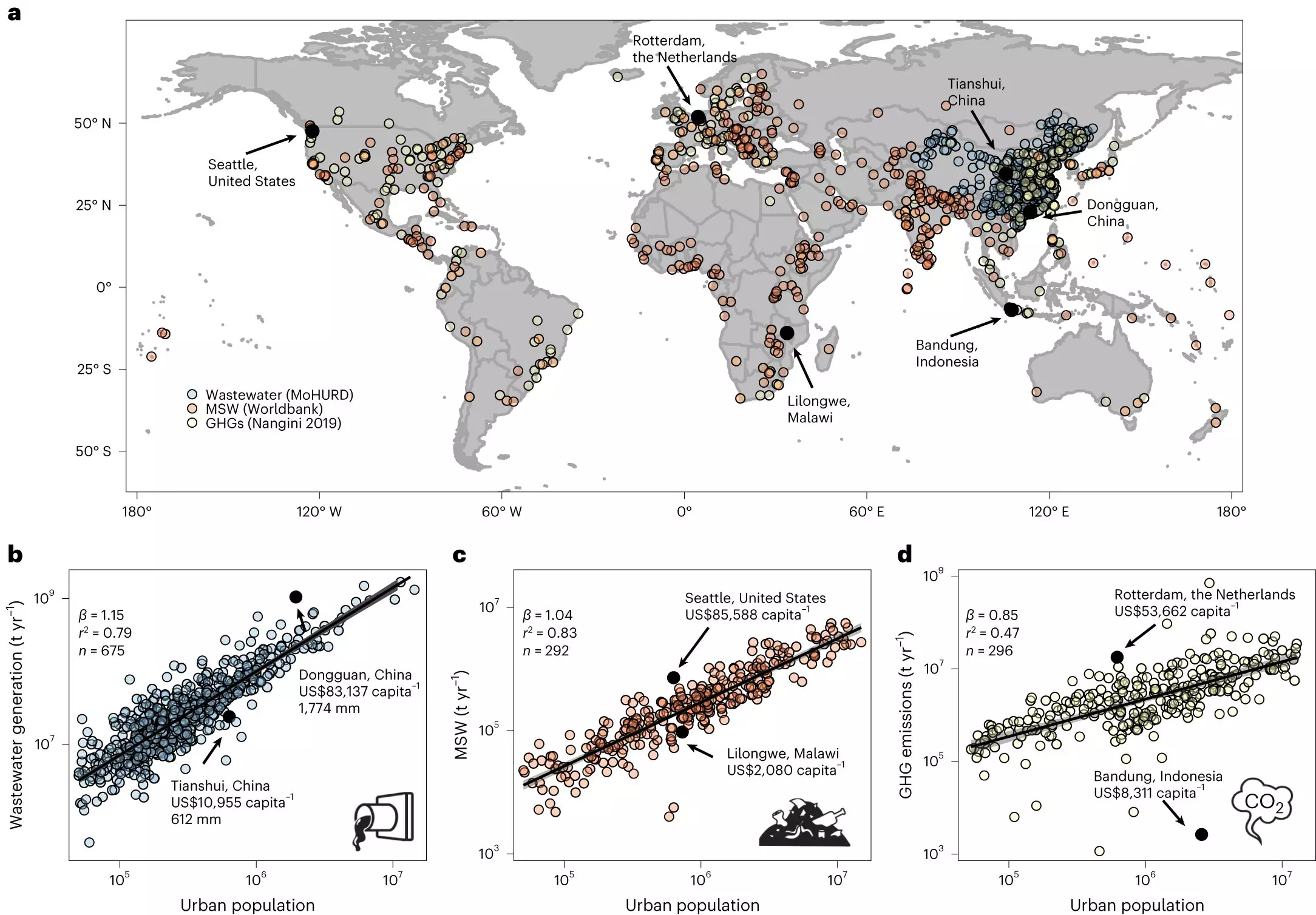The issue of waste has long plagued human societies, with its detrimental effects on the environment becoming more apparent as the global population continues to grow. Despite the existence of natural waste management processes in ecosystems, the waste generated by human activities poses a significant challenge. In a world where two-thirds of the population will be living in cities by 2050, waste production has become a mounting worldwide crisis. Microplastics pollute the planet, wastewater contaminates waterways, and greenhouse gas emissions drive global climate change. This article explores a recent study published in Nature Cities that delves into the production of waste, specifically municipal solid waste, wastewater, and greenhouse gas emissions, in over one thousand cities worldwide.
The study, conducted by Assistant Professor Mingzhen Lu and Professor Chris Kempes, utilizes scaling theory to analyze waste production as a function of urban systems. Scaling theory, originally used in biology to describe physiological changes in organisms with body mass, provides insights into how waste production scales with the growth of cities. By analyzing data from various cities, the researchers were able to identify overarching patterns and transcend the individuality of each city.
Distinguishing Waste Patterns
One of the key findings from the study is that waste production differs as cities grow. Municipal solid waste, which is tied to individual consumption, scales linearly with population growth. This means that as the population increases, the amount of solid waste generated also increases at the same rate. On the other hand, wastewater production scales superlinearly, meaning that bigger cities contribute disproportionately more liquid waste compared to smaller cities. Interestingly, greenhouse gas emissions scale sub-linearly, suggesting that as cities grow, they expel fewer emissions relative to their size. This can be attributed to the implementation of more efficient energy and transportation infrastructure in larger cities.
Another important finding is the relationship between waste generation and economic growth. Wealthier cities tend to deviate from the universal scaling law, as they produce more waste across the board. This highlights the impact of economic prosperity on waste generation. As cities experience higher per-capita GDP, waste production increases, underscoring the need to address waste management and sustainability in urban areas.
The implications of this study are significant. It emphasizes the urgent need for a new science of waste, one that can accurately predict the future state of urban ecosystems and inform policies to reduce waste and enhance sustainability. With the growing challenges posed by waste, it is crucial to develop effective waste management strategies that can mitigate its negative impacts on the environment and human health. Just as fungi have been able to decompose waste from trees and create sustainable ecosystems that have lasted for millions of years, humanity must learn from nature’s examples to build a more sustainable future.
The global crisis of waste is a pressing issue that requires immediate attention. The study discussed in this article sheds light on waste production in cities, uncovering distinct patterns in municipal solid waste, wastewater, and greenhouse gas emissions. Understanding these patterns and the influence of economic growth is essential in formulating effective waste management strategies and promoting sustainability in urban environments. As cities continue to expand and the global population increases, it is crucial to address waste as a prominent challenge of our time. Only by taking proactive measures and implementing sustainable practices can we create a healthier and greener future for generations to come.


Leave a Reply